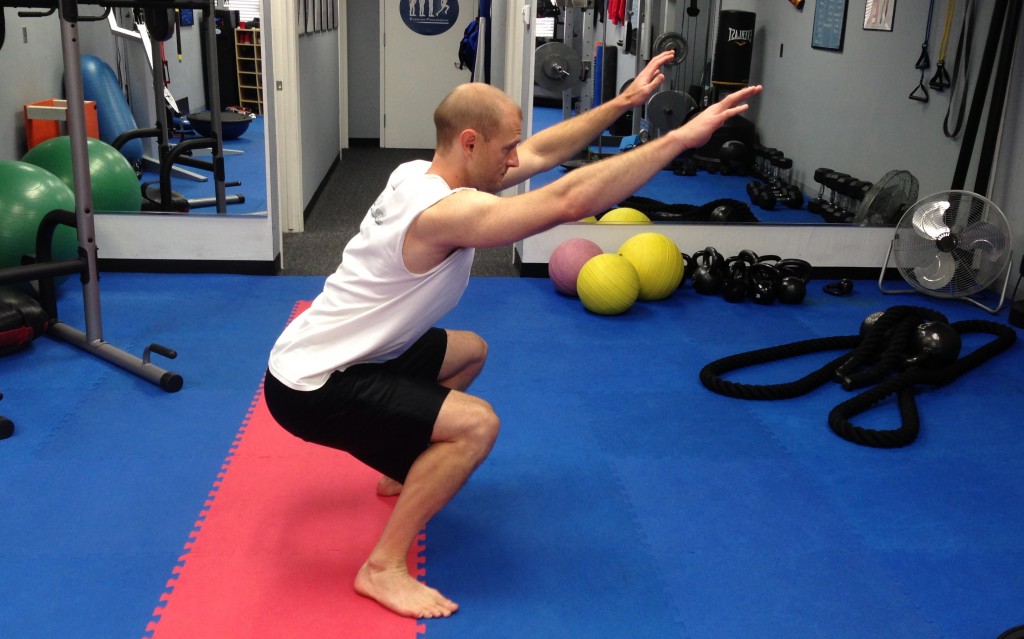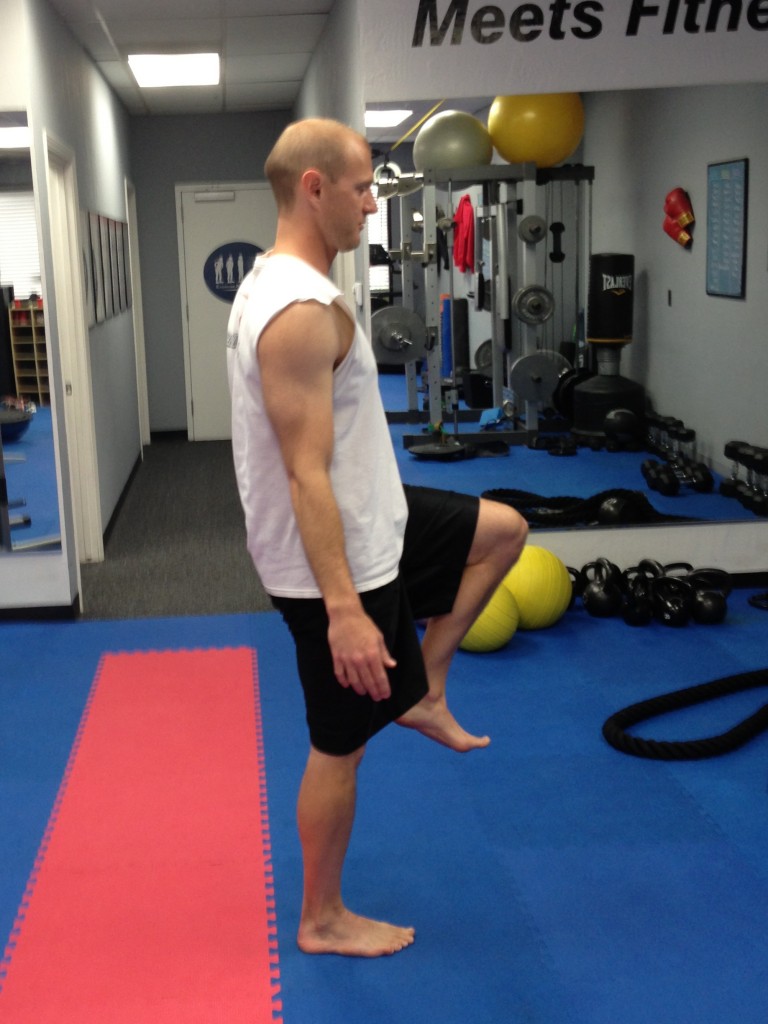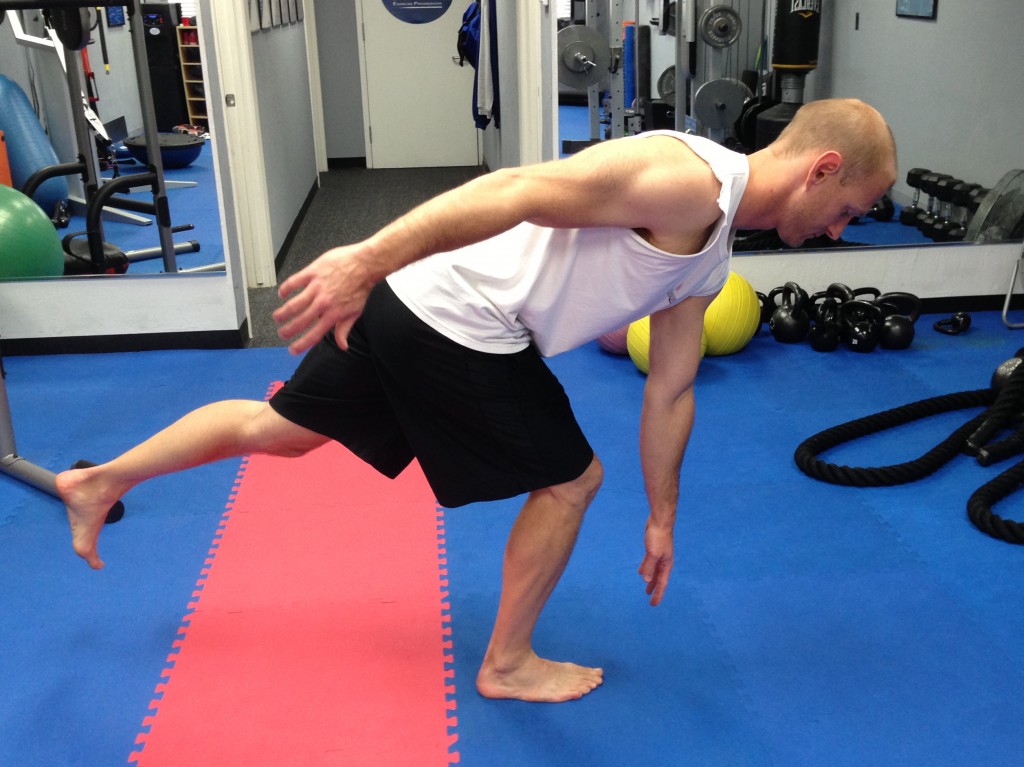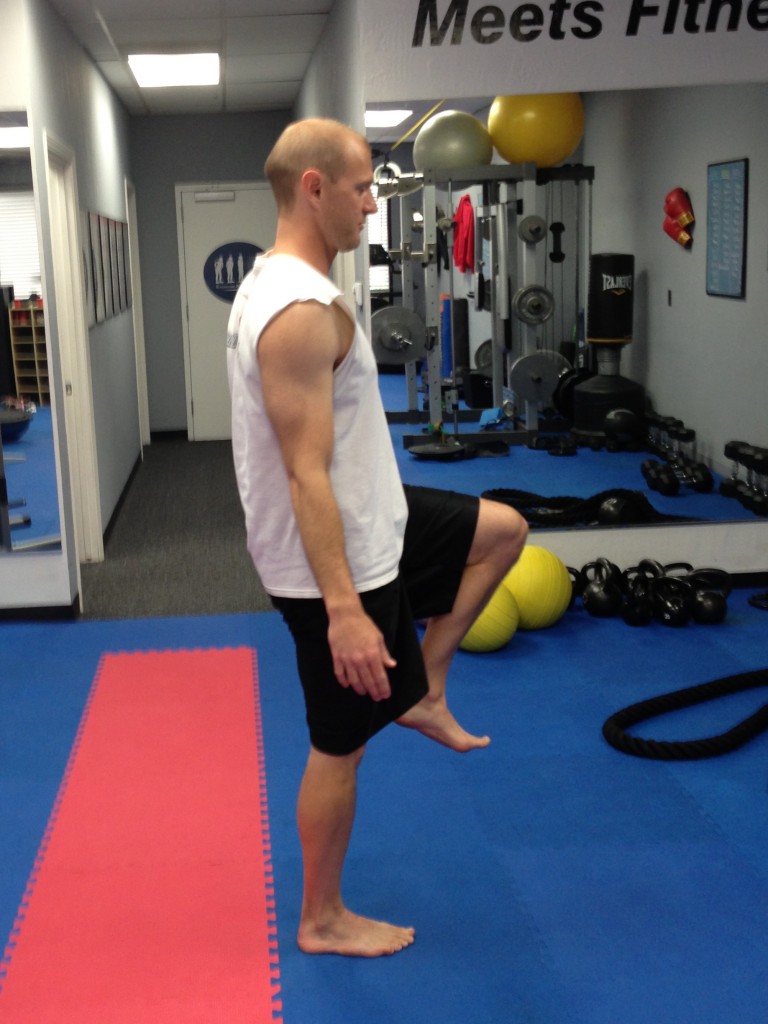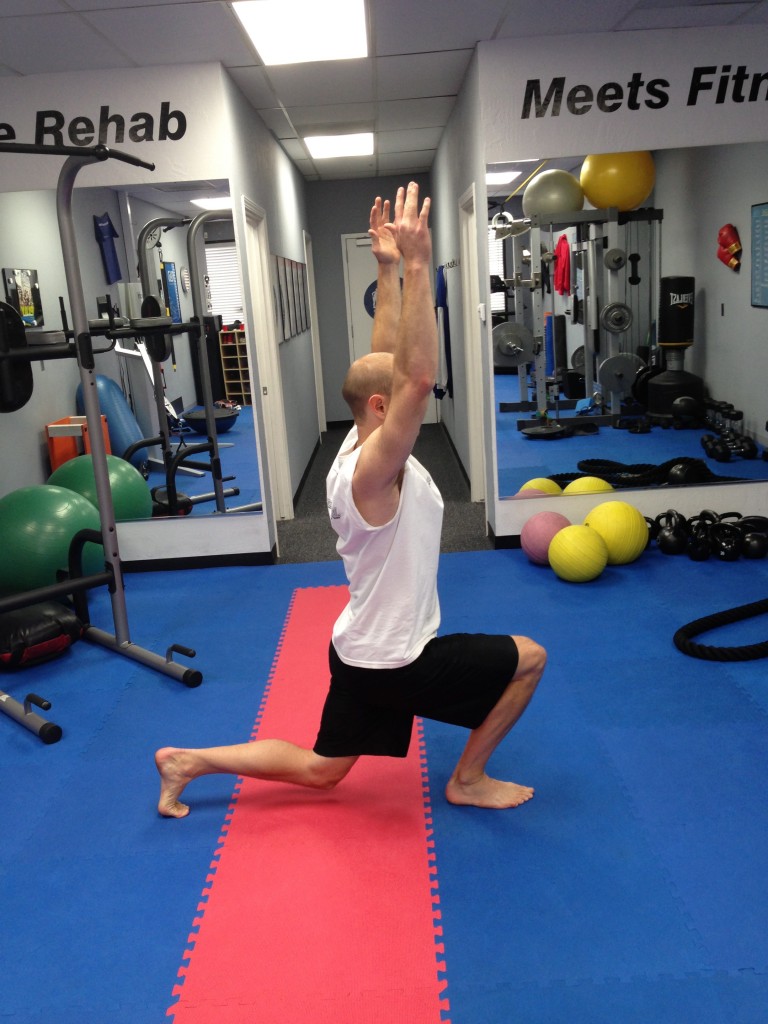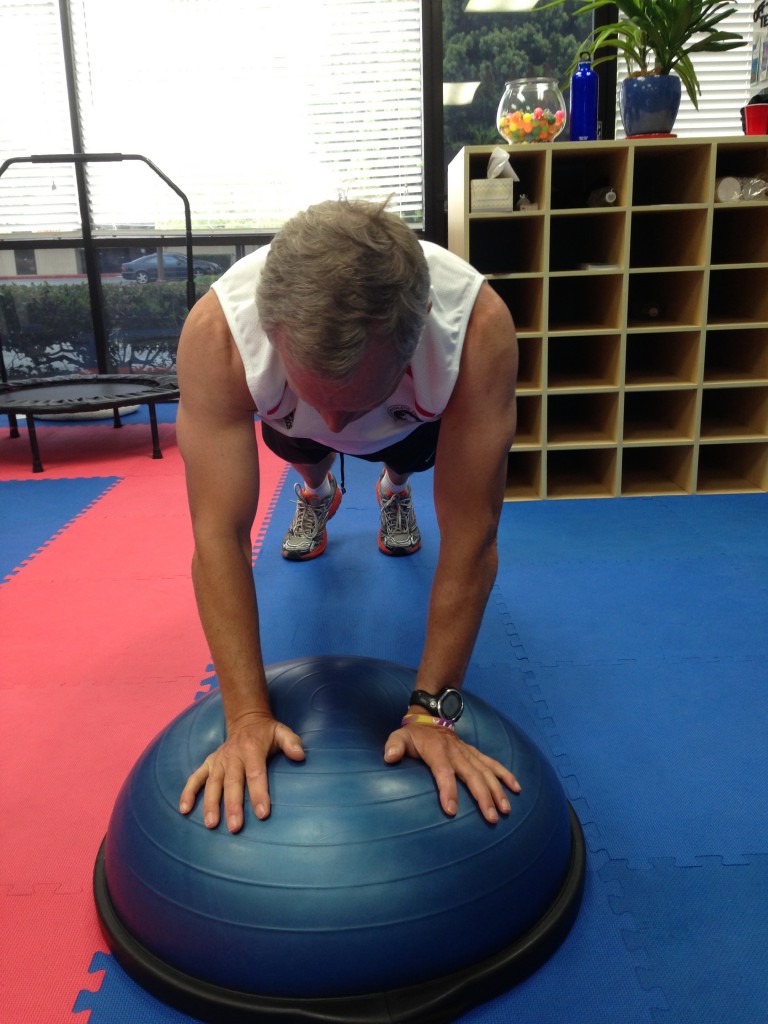Are you ready to become a faster and more injury proof runner? Here is a 10 minute routine for you to add after your run!
1. Body Weight Squats.
Position your feet shoulder width apart, with your toes facing forward or only slightly splayed out. Raise your arms (this will engage your lats and back) and look forward. Sit back, as if there were a chair behind you, and don’t let your knees get in front of your toes. You should feel your gluts, quads and hamstrings as your thighs get close to parallel to the ground. Go down (eccentric) slowly, and go up faster.
Body weight squats may be the best single resistance exercise for a distance runner, as it works the hammies, quads and gluts.
Start with 8-12 repetitions and build up to 25 reps.
Body Weight Squat
2. Single Leg Deadlift (a Warrior 3 rotation).
Start on one leg with the other leg held in front of you, knee bent at 90 and the thigh parallel to the ground. Bend the standing leg slightly, while slowly extending the free leg behind you; keep this leg active as if you were trying to push a door shut behind you. At the same time, reach towards the toe on the ground with the opposite toe; don’t worry if you don’t get close at the start, keep working at this.
Most young runners don’t use their gluts enough; we all tend to be hamstring-dominant. Single leg deadlifts will help get your gluts stronger and more active.
Start at 8 to 12 reps per side and build up to 25 reps per side.
Single-leg Deadlift Starting Position
Single Leg Deadlift Ending Position
3. Reverse Lunges.
Start in the same position as single leg deadlifts, standing on one leg with the other leg held in front of you, knee bent at 90 and the thigh parallel to the ground. Slowly, and in control, bring the hanging leg behind you and find a low lunge position. Keep your front knee above your foot, and relax your front toes (your toes will tend to curl). Raise your arms to engage your back and get a stretch. Slowly return to the starting position.
While running you are always on one leg, so it is important to have great pelvic stability and balance. If each stride is stable and you are not having to make micro-adjustments to your balance each time you land, every stride you take will be stronger and more economical. You may not notice any specific change, but your running will be more powerful and economical.
Start with 8 to 12 reps each side, and work up to 25 reps each side.
Reverse Lunge Starting Position
Reverse Lunge Ending Position
4. Core
Finish up with five minutes of core work–and this means back and side muscles, not just abs. Do a mix of exercises like:
Plank, side plank, crunches, V-ups, climb-the-rope, bicycle, rockets, roll-ups, fire hydrants, superman…there are hundreds of exercises that can strengthen your core. Do a mix of every thing you can think of.
High Plank
Summary
These are four basic additions to your running routine that you can do without any equipment. The important thing is for you to think of these exercises as an important part of your weekly running routine, and do this routine often–three times a week is a good goal, say after your run on Monday, Wednesday and Friday.
You will feel the difference!
Basic Strength Routine for Runners: 10 minutes that will make a difference.
1. Body Weight Squats (goal: 25 reps)
2. Single Leg Dead Lift (goal: 25 reps each side)
3. Reverse Lunge (goal: 25 reps each side)
4. Core (5 minutes)
Three times per week.

